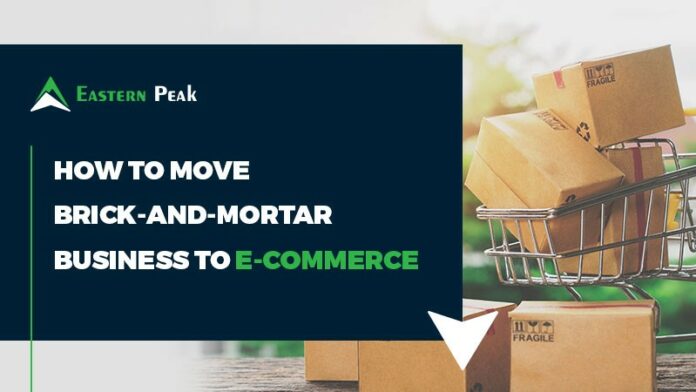In an era defined by digital transformation and rapidly changing consumer behaviors, the journey from brick-and-mortar establishments to thriving e-commerce platforms has become not just a choice, but a strategic imperative for businesses of all sizes. As the lines between physical and virtual shopping blur, it is crucial for businesses to understand and implement effective strategies that pave the way for successful e-commerce ventures. In this comprehensive guide, we unveil the core strategies that empower brands to seamlessly transition from traditional retail models to the world of click-and-order commerce.
The E-Commerce Revolution: Navigating the Digital Landscape
Embracing Technological Evolution
The foundation of e-commerce success lies in embracing the rapid technological evolution that is reshaping the retail landscape. From user-friendly website interfaces and mobile-responsive designs to secure payment gateways and seamless checkout experiences, every aspect of your online platform should be optimized to cater to the demands and expectations of modern digital consumers.

Building a User-Centric Interface
User experience (UX) is the cornerstone of e-commerce triumph. A well-designed, intuitive, and user-centric interface not only enhances customer satisfaction but also encourages repeat business and brand loyalty. Invest in comprehensive UX research and design to ensure your website guides visitors effortlessly from browsing to purchase, mirroring the ease of an in-store shopping experience.
The Power of Digital Marketing and Brand Visibility
Crafting a Comprehensive Online Presence
In the digital realm, visibility is key. Establishing a comprehensive online presence across multiple channels is paramount. Leverage the power of search engine optimization (SEO) to ensure your e-commerce store ranks prominently in search engine results pages (SERPs). Implement keyword-rich product descriptions, metadata, and blog content to capture organic traffic and engage potential customers.
Harnessing the Potential of Social Media
Social media platforms have emerged as indispensable tools for e-commerce success. Develop a robust social media strategy that leverages platforms like Facebook, Instagram, and Twitter to showcase your products, engage with your audience, and drive traffic to your online store. Incorporate visually appealing content, customer testimonials, and limited-time promotions to entice and convert potential buyers.
Seamless Shopping Experience: The Path to Conversion
Personalization and Tailored Recommendations
One of the standout advantages of e-commerce is the ability to gather and analyze customer data to deliver personalized shopping experiences. Implement algorithms that track customer preferences and browsing history to offer tailored product recommendations. Personalization enhances customer satisfaction, boosts average order values, and fosters long-term loyalty.
Simplified Checkout and Secure Transactions
Cart abandonment is a significant challenge in e-commerce. A streamlined and hassle-free checkout process is crucial to minimize abandoned carts and maximize conversions. Additionally, prioritize the implementation of robust security measures to instill confidence in online shoppers, assuring them that their personal and financial information is well-protected.
Logistics and Fulfillment: Delivering Excellence
Efficient Inventory Management
Successful e-commerce hinges on effective inventory management. Implement automated systems that track inventory levels in real-time, ensuring products are consistently available and ready for shipping. Avoid overstocking or understocking, as both scenarios can negatively impact customer satisfaction and revenue.
Expedited Shipping and Customer Service
In the age of instant gratification, expedited shipping options have become a competitive necessity. Offer a range of shipping choices, including same-day or next-day delivery, to cater to varying customer needs. Additionally, prioritize exceptional customer service by promptly addressing inquiries, providing order updates, and swiftly resolving any issues.
Embracing the Future: E-Commerce Innovation
Exploring Augmented Reality (AR) and Virtual Reality (VR)
As technology continues to advance, integrating augmented reality (AR) and virtual reality (VR) experiences into your e-commerce platform can set you apart from the competition. Allow customers to virtually try on products, visualize furniture in their homes, or preview clothing items in various colors. AR and VR enhance engagement and reduce the uncertainty associated with online purchases.
Leveraging Data Analytics for Growth
Data is a goldmine of insights that can drive e-commerce success. Implement advanced analytics tools to monitor customer behavior, track conversion rates, and identify trends. Utilize these insights to refine your marketing strategies, optimize product offerings, and enhance the overall customer journey.
Conclusion: Thriving in the Digital Marketplace
The transition from brick-and-mortar to e-commerce is not just a shift in platform; it’s a paradigm shift in how businesses engage with their customers. By embracing technological innovation, prioritizing user experience, and adopting data-driven strategies, brands can seamlessly navigate the digital landscape and establish a formidable online presence.
E-commerce success is not merely about transactions; it’s about creating a holistic and memorable shopping journey that resonates with the digital-savvy consumer of today. As you embark on this transformative journey, remember that the path from brick-and-mortar to click-and-order is a dynamic and ever-evolving one, filled with opportunities to connect, engage, and prosper.


